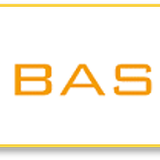Studi Empiris Government Effectiveness Dan Trade Openness Terhadap Perdagangan Internasional
DOI:
https://doi.org/10.24912/je.v24i3.598Abstract
This study aims to examine the impact of macroeconomic factors such as Inflation, Exchange Rates, Total Labor Force, Technology, Worldwide Government and Trade Openness on International Trade in 10 Islamic countries as the main actors of international trade Intra-OKI from 2005 to 2018. Quantitative research This applies the Panel Data Regression method to the Fixed Effect Model. Research analysis techniques use the EViews 10. software program. Empirical results show that inflation and total labour force, government effectiveness and trade openness have a significant positive effect on Intra-OKI international trade. This means that the better the quality of worldwide government and trade openness in a country will increase the country's international trade activities. In addition, exchange rates and technology do not have a significant effect on Intra-OKI international trade.
References
Al-Qur’an
Alam, M. M. and Murad, M. W. (2019). The Impacts Of Economic Growth, Trade Openness And Technological Progress On Renewable Energy Use In Organization For Economic Cooperation And Development Countries. Renewable Energy, Elsevier Inc, 382-390, https://doi.org/10.1016/j.renene.2019.06.054.
Alotaibi, A. R. and Mishra, A. V. (2014). Determinants of International Financial Integration of GCC Markets. Emerging Markets and the Global Economy, Elsevier Inc, http://dx.doi.org/10.1016/B978-0-12-411549-1.00031-4.
Asamoah, M. E., Adjasi, C. K. D., and Alhassan, A. L. (2016). Macroeconomic Uncertainty, Foreign Direct Investment And Institutional Quality: Evidence from Sub-Saharan Africa. Economic Systems, 40(4), 612–621. https://doi.org/10.1016/j.ecosys.2016.02.010.
Auboin, M. and Ruta, M. (2013). The Relationship Between Exchange Rates and International Trade: a Literature Review. World Trade Review, pp 577-605 http://journals.cambridge.org/WTR.
Aziz, O. G. (2018). Institutional quality and FDI inflows in Arab economies. Finance Research Letters, 25(August 2016), 111–123. https://doi.org/10.1016/j.frl.2017.10.026.
Baltas, N. C. (2013). The Greek Financial Crisis and the Outlook of the Greek Economy. Journal of Economic Asymmetries, 10(1), 32–37. https://doi.org/10.1016/j.jeca.2013.09.002.
Binici, M., Cheung, Y.-W., and Lai, K. S. (2012). Trade Openness, Market Competition, And Inflation: Some sectoral evidence from OECD countries. International Journal of Finance Economics, 17(4), 321–336.
Busse, M., and Hefeker, C. (2007). Political Risk, Institutions And Foreign Direct Investment. European Journal of Political Economy, 23(2), 397–415. https://doi.org/10.1016/j.ejpoleco.2006.02.003.
Cacciatore, M. (2014). International Trade and Macroeconomic Dynamics with Labor
Market Frictions. Journal of International Economics, http://dx.doi.org/10.1016/j.jinteco.2014.01.008.
Chakrabarti, A. S. (2018). Dispersion In Macroeconomic Volatility Between The Core And Periphery Of The International Trade Network. Journal of Economic Dynamics & Control, https://doi.org/10.1016/j.jedc.2018.01.019.
Committee for Economic and Commercial Cooperation of The Organization of Islamic Cooperation (COMCEC). (2018). COMCEC Trade Outlook. Ankara: COMCEC Coordination Office.
Committee for Economic and Commercial Cooperation of The Organization of Islamic Cooperation (COMCEC). (2019). Annual Report On Trade Among The OIC Member States. Ankara: The Islamic Centre for Development of Trade.
De Groot, H. L. F., Linders, G. J., Rietveld, P., and Subramanian, U. (2004). The Institutional Determinants Of Bilateral Trade Patterns. Kyklos, 57(1), 103–124.
De Mendonca, H. F., and Veiga, I. S. (2014). A note on Openness and Inflation Targeting: Implications for the Unpleasant Fiscal Arithmetic. Macroeconomic Dynamics, 18(5), 1187–1207.
Dumairy. (1999). Perekonomian Indonesia. Jakarta: Penerbit Erlangga.
Gujarati, D. N., and Porter, D. C. (2009). Basic Econometrics (5th ed.). New York:
McGraw-Hill/Irwin.
Henry, C., and Longmore, R. (2003). Current Account Dynamics and The Real Effective Exchange Rate : The Jamaican Experience, (March), 1–30.
Herrera-Echeverri, H., Haar, J., and Estévez-Bretón, J. B. (2013). Foreign Direct Investment, Institutional Quality, Economic Freedom And Entrepreneurship In Emerging Markets. Journal of Business Research, 1921–1932. https://doi.org/10.1016/j.jbusres.2013.11.020.
Kang, J. W. and Dagli, S. (2018). International Trade and Exchange Rates. Journal of Applied Economics, Vol. 21, No. 1, 84–105, https://doi.org/10.1080/15140326.2018.1526878.
Kaufmann, D., Kraay, A., and Mastruzzi, M. (2010). The Worldwide Governance
Indicators Methodology and Analytical Issues (No. 5430).
Kayalvizhi, P. N., and Thenmozhi, M. (2018). Does Quality of Innovation, Culture and Governance Drive FDI?: Evidence from Emerging Markets. Journal Emerging Markets Review, 34, 175–191. https://doi.org/10.1016/j.ememar.2017.11.007.
Langbein, L. and Knack, S. (2010). The Worldwide Governance Indicators: Six, One, or None?. Journal of Development Studies, Vol. 46, No. 2, 350–370.
Madanizadeh, S. A. and Pilvar, H. (2019). The Impact Of Trade Openness On Labour Force Participation Rate. Applied Economics, https://doi.org/10.1080/00036846.2018.1558350.
Madura, J. (2010). International Corporate Finance. Joe Sabatino.
Majoka, M. I., Sahibzada, H. E., and Khan, M. S. (2012). Resources of The Muslim World: A Reflection on the Muslim World’s Resources, Their Development and Utilization. Journal of Islamic Thought and Civilization (JITC), 2(1).
Mendonca, H. F. D. and Nascimento, N. C. (2018). Monetary Policy Efciency And Macroeconomic Stability: Do Fnancial Openness And Economic Globalization Matter?. North American Journal of Economics and Finance, 1–20. https://doi.org/10.1016/j.najef.2018.10.018.
Miller, T., Kim, A. B., Roberts, J. M. and Tyrrell, P. (2019). Highlight of The 2019 Index of Economic Freedom. Washington, DC: The Heritage Foundation.
Mina, W. (2007). The Location Determinants of FDI in the GCC Countries. Journal of Multinational Financial Management, 17, 336–348. https://doi.org/10.1016/j.mulfin.2007.02.002.
Muslim, A. (2016). Apakah Perdagangan Menjadi Pertimbangan Investasi? Kajian Ekonomi & Keuangan, 20(2).
Nath, H. K., and Mamun, K. A. A. (2004). Trade Liberalization, Growth And Inequality In
Bangladesh: An Empirical Analysis. In: The 41st Annual Conference of the Missouri,Valley Economic Association Held in Nashville. TN.
Octavia, E. R. and Wulandari, D. (2016). Analysis of Effect Macro Variable on International Trade of Indonesia. Business and Economic Research ISSN 2162-4860, Vol. 6, No. 2.
Ozdamar, G. (2015). Factors Affecting Current Account Balance of Turkey : a Survey With the Cointegrating Regression Analysis. Journal of Business, Economics & Finance, 4, 633–658.
Pan, X., Uddin, M. K., Saima, U., Jiao, Z. and Han, C. (2019). How Do Industrialization And Trade Openness Influence Energy Intensity? Evidence From A Path Model In Case Of Bangladesh. Energy Policy, www.elsevier.com/locate/enpol, https://doi.org/10.1016/j.enpol.2019.110916.
Semancikova, J. (2016). Trade, Trade Openness and Macroeconomic Performance. Procedia - Social and Behavioral Sciences 220, Science Direct, 407 – 416. doi: 10.1016/j.sbspro.2016.05.515.
Statistical, Economic and Social Research and Training Centre for Islamic Countries (SESRIC). (2018). OIC Economic Outlook. Ankara: Publication Department of SESRIC.
Toarna, A., and Cojanu, V. (2015). The 2008 Crisis: Causes and Future Direction for the Academic Research. Procedia Economics and Finance, 27(15), 385–393. https://doi.org/10.1016/S2212-5671(15)01010-2.
Uz, I. (2010). Determinants of Current Account: Relation between Internal and External Balances in Turkey. Applied Econometrics and International Development, 10–2, 115–126.
Walter, J., Baek, J. and Koo, W. W. (2012). International Trade and Macroeconomic Dynamics: The Case of U.S. Bilateral Trade with G-7 Countries. Research in Economics, http://dx.doi.org/10.1016/j.rie.2012.06.003.
Downloads
Published
How to Cite
Issue
Section
License
Copyright (c) 2020 Jurnal Ekonomi

This work is licensed under a Creative Commons Attribution-NonCommercial-ShareAlike 4.0 International License.
This journal provides immediate open access to its content on the principle that making research freely available to the public supports a greater global exchange of knowledge.

This work is licensed under a Creative Commons Attribution-NonCommercial-ShareAlike 4.0 International License.


















